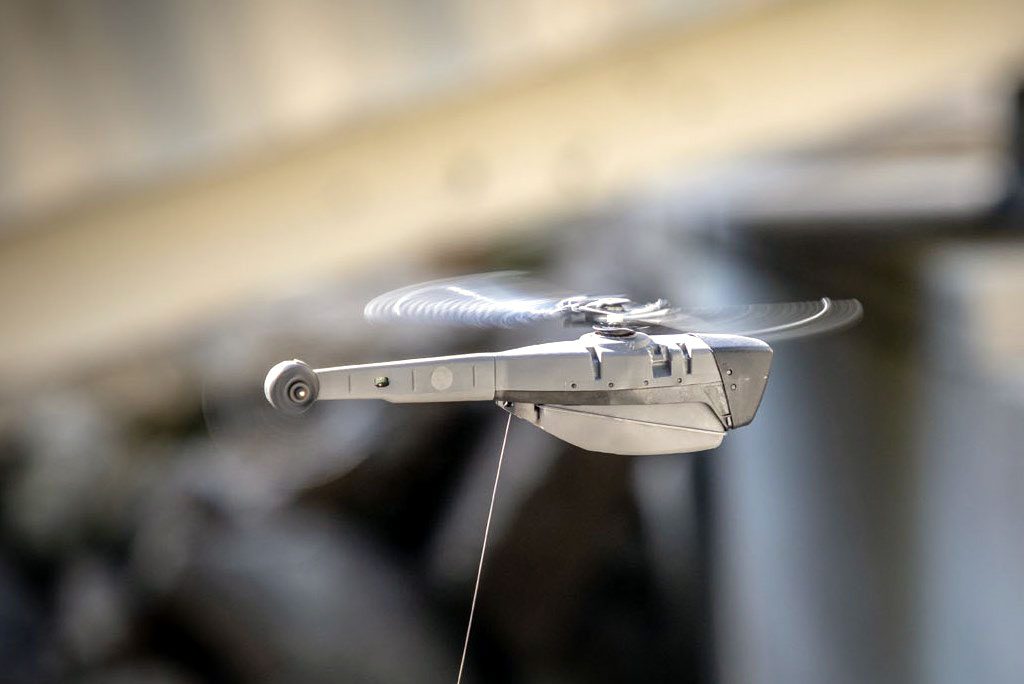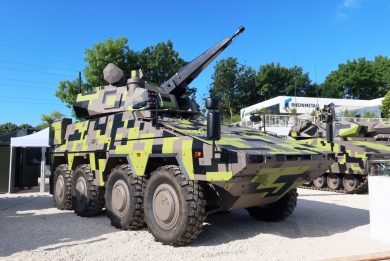
Unmanned intelligence in the air
Probably the smallest system manufactured by FLIR, the Black Hornet 3 Unmanned Aerial System (UAS) has become a standard intelligence gathering asset among US Army soldiers and among soldiers of many other nations. The system will soon see some innovations, which support the company reference objective of providing smarter capabilities for situation understanding to the enabled warrior. “The first is a software enhancement to fielded and new Black Hornet 3 systems that comes as part of our PRS 4.1 software upgrade,” David Proulx, VP of Product Management for Unmanned Systems & Integrated Solutions, says. At 33 grams take-off weight the Black Hornet Personal Reconnaissance System is currently the only nano-UAS organic ISR available and FLIR is continuously enhancing its capabilities. “The PRS 4.1 release includes many features, such as the backtracking feature that is particularly effective in close quarters or denied environment operating areas,” Proulx explains.
When entering a building where both GPS and communication links might be lost, thanks to the new software the aircraft will soon be able to retrace its steps, exploiting computer vision and AI algorithms to regain link with the operator. “This is important also for survivability and recoverability of the asset, as it does not get lost into the target area, but even more important for the operator safety, as he does not need to expose himself and go forward to recover the asset or manually recce the target building area,” Proulx adds. Increasing the chance to recover the BH 3 even in difficult situations enhances the availability of the ISR asset, allowing to exploit it for further missions. Currently the PRS 4.1 release is under end-user evaluation and will be fielded on new and fielded units within year end.

The Black Hornet is certainly not the only UAS available in FLIR’s portfolio. SkyRanger R70 and SkyRaider R80D are the multi-mission elements of the company portfolio; these quadcopters have a weight of 4.7 kg without payload, and can fly up to 2 kg of sensors at 8 km distance with a maximum speed of 50 km/h. Flying at distance is however not the only way to employ those assets, FLIR having designed a tethered kit that can be installed in minutes in the field, transforming the UAS in a persistent ISR asset. “Using this kit power is provided by generators-based, vehicle-based or other fix sources of persistent power,” Proulx explains, however the on-board battery remaining in stand-by will allow the aircraft to safely fly, should the ground power system fail.
“This not only enables persistent ISR overwatch, i.e. of semi-permanent operating locations, but also opens a mission environment to non-ISR or non-optical applications, using it to carry i.e. a re-trans capability putting various radios 130 meters over the battlefield allowing to maintain communication links beyond terrestrial radio line of sight,” he adds, underlining that this means ensuring the spread of information coming from all sensors in the area contributing to situation understanding. The SkyRaider will be one of the unmanned elements of other programmes involving FLIR as systems integrator.
Photos courtesy FLIR



